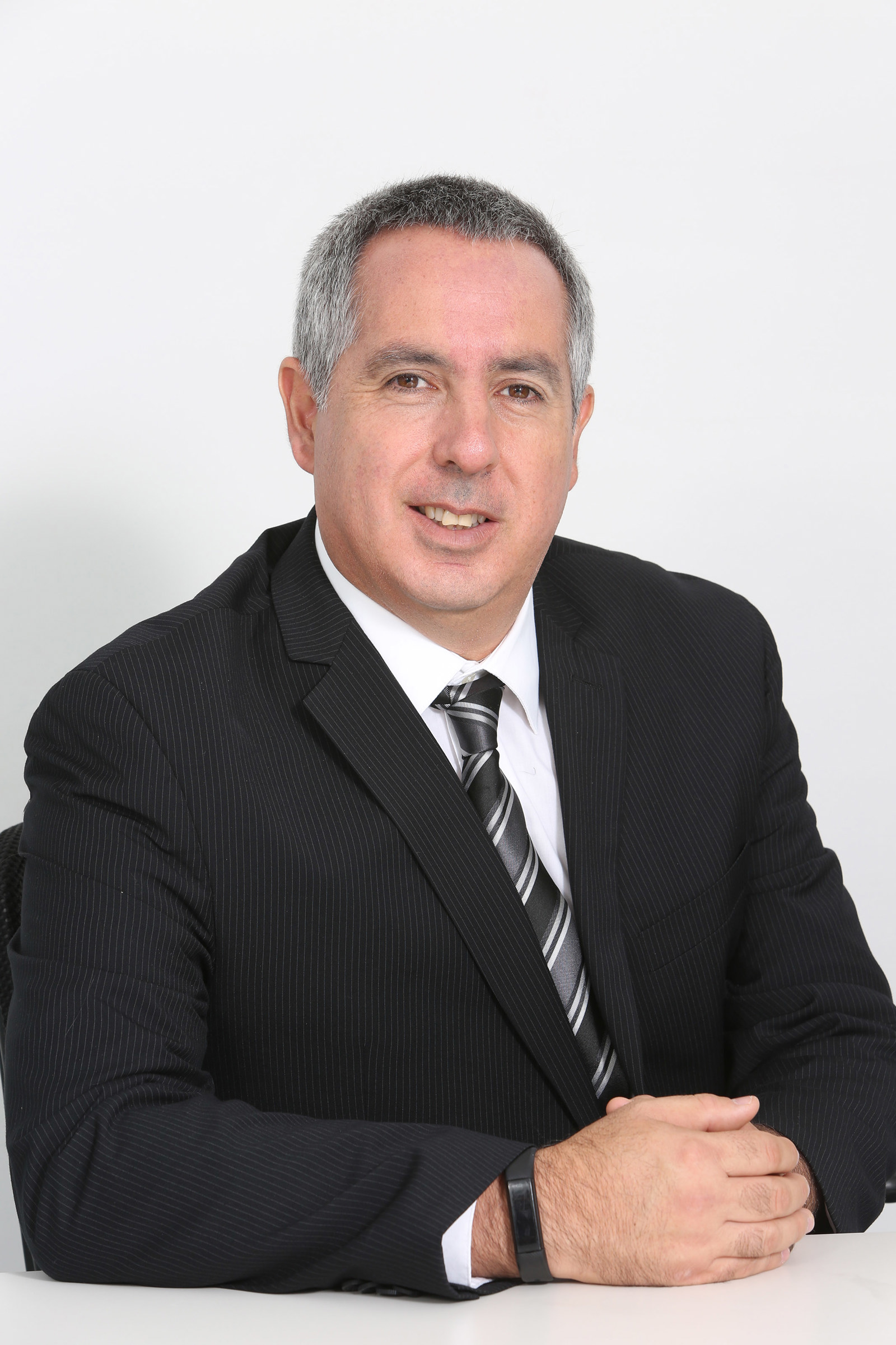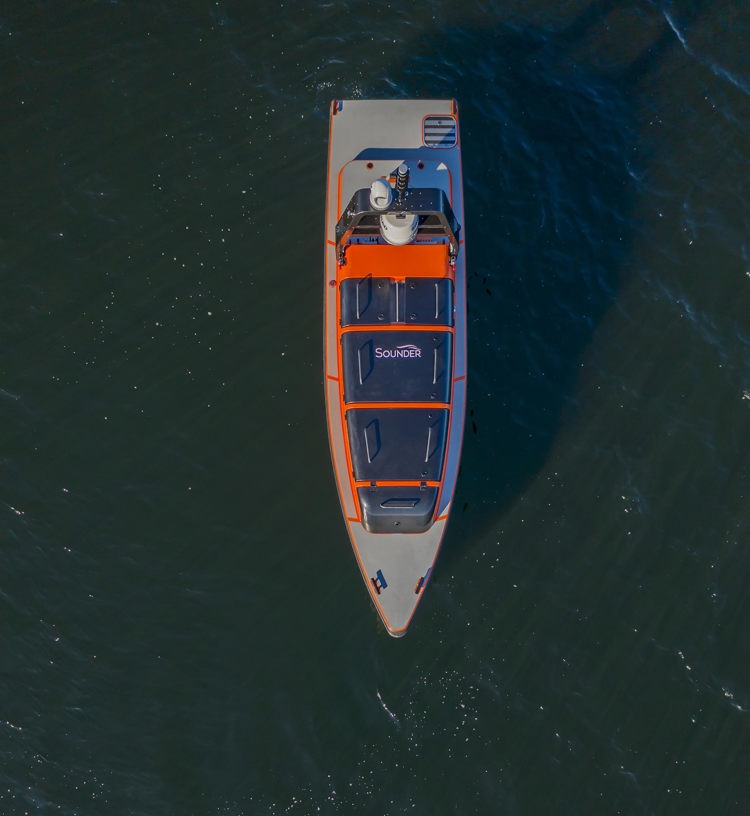
Fishing for sustainability
Next year, TASA, Peru’s largest integrated fishing company, will be using KONGSBERG’s Sounder Unmanned Surface Vehicle (USV) with its array of state-of-the-art fish finding systems to increase the efficiency of its operations and provide valuable data to protect the sustainability of the country’s fish stocks.
-
Text:Marketing & Communication Department
Photo:@ TASA
-
Gunvor Hatling MidtbøVice President, Communications
When Dereck Zimmermann takes delivery of KONGSBERG’S new Sounder Unmanned Surface Vessel (USV) in Peru next year, TASA is going to name the vessel ‘Cuidamar’, which loosely translates as ‘caretaker of the ocean.’
As Central Fishing Manager for TASA, the largest integrated fishing company in Peru, Dereck has two goals: to increase the efficiency of the company’s fishing fleet of 48 purse seiner vessels while at the same time safeguarding the sustainability of Peru’s fish stock – and the Sounder USV is going to play an important role in both of these aims.
This new ‘drone’ technology, with its complement of sonar, echosounder and sea monitoring sensor equipment, is not only going to help TASA find more fish and faster, its data gathering capabilities are also going to make a significant contribution to the sustainability of fishing stocks off the Peruvian coast.
In addition to its fleet, TASA also operates nine processing plants in Peru producing fish meal and fish oil from the prodigious shoals of anchovies that gather to feed off the coast, attracted by the upwelling of nutrient-rich cold water of the Humboldt Current. Peruvian fishmeal is some of the highest quality in the world and is eagerly sought in markets as far away as China, Japan and Europe. TASA also fishes for jack mackerel and horse mackerel for domestic consumption.

Support for a key industry
After the Peruvian anchovy stocks collapsed in the 1970s due to overfishing and an “El Niño event”, the government has worked with the fishing industry to implement a quota system for the two anchovy seasons which occur in the north and south fisheries, either side of the 16th parallel. The Ministry of Production uses data collected by El Instituto del Mar del Perú (IMARPE) to assess the fish stocks for the coming season and announces quotas based on fishing 25 per cent to 35 per cent of the stocks available. The industry is highly regulated and the quotas can change rapidly during the fishing season if the Ministry believes conditions change, as happened at the beginning of 2020 when the fishing season was curtailed early when a high percentage of juvenile fish were being caught.
Salvador Peraltilla, Scientific Adviser for Peru’s National Fisheries Society and former IMARPE scientist, says that Peru’s approach has paid dividends over the years. “The implementation of anchovy quotas has been a great success. Previously, there was a lot of pressure on the resource but following quotas each company regulates its fishing periods, generating a healthy and stable fish population. IMARPE’s adaptive biological management, based on the current environmental situation and resource condition, helps to set quotas and the success of this management is evidenced with an average biomass of more than eight million tons in the last 10 years, which has been very stable.”

Dereck Zimmerman, Central Fishing Manager, TASA
Dereck explains: “We began the Cuidamar project in 2008 to put sustainability at the forefront of our business and to look at how to develop better business practices. There are four pillars to Cuidamar; the first is about training the crew to embrace sustainable fishing; and the second is about developing continuous monitoring of the marine ecosystem. This is what led us to look at different drone platforms.
“We looked at flying and submarine drones but there was an issue around speed and autonomy, and when I heard about the KONGSBERG USV project I went to Norway to find out more and believed this was the platform for us,” he says.
Cuidamar’s third pillar is about developing a marine biodiversity management plan, such as releasing marine fauna or self-generating fishing bans where juveniles or non-target fish are caught. The fourth, which will be supported by the Sounder USV, is the use of recorded data to improve fishing practices.
Stian Kristoffersen, KONGSBERG’s Product Manager – USV Solutions, is impressed with TASA’s commitment to sustainability and believed the Sounder USV will play an important role in their Cuidamar agenda and says: “TASA is an innovative company with a scientific approach to assessing the quality of fish stocks”.
TASA will use their purse seiner vessels to collect data to understand the conditions in the ocean and how this affects the fish, and they plan to systemise this data to learn more.
Environmental and budget benefits
TASA will conduct trials of the Sounder USV for 12 months in a fish-finder role, setting ‘sail’ ahead of the trawler fleet, using KONGSBERG’S Simrad SX90 fisheries sonar and echo sounder to locate shoals of fish and then relaying the location back to head office to inform the fleet.
This will enable TASA to make significant savings on fuel and carbon emissions by keeping its fleet in harbour rather than searching the oceans for fish. Putting a larger purse seiner vessels to sea can cost around $10,000 to $12,000 (NOK 91,600 to 109,800 per day), while the 125-hp diesel-driven 26.5-foot USV can cruise at 4 knots an hour (it is capable of reaching 12 knots) for more than 20 days at a cost of around $64 per day (NOK 623).
The vessel can run autonomously or under remote control via a K-MATE autonomy engine, with communication through Maritime Broadband Radio/Iridium.
The hull of the Sounder USV was designed by a Norwegian lifeboat manufacturer so is self-righting and can withstand hurricane conditions, but its main advantage is that it is specifically designed for acoustic performance.
The Sounder USV system is a multi-purpose platform optimised for hydro acoustic data acquisition. For TASA’s requirements, the high-definition Simrad SX90 fishery sonar is used in combination with a Simrad ES80 wideband echo sounder to enable it to search over large areas of ocean and transmit data to a land-based receiver and fishing vessels. There is a moon pool in which KONGSBERG can put other equipment and sensors for measuring the water at depth.

The new echosounders will provide much more information and a trained operator can identify the type of fish by the way they move and look at the size distribution of the shoal. For our customers, this is important to assess whether the stock is mature enough to fish.
The sound waves are reflected off the swimming bladders of fish and this provides all kinds of information about the species and its size distribution. However, for mackerel, which don’t have a swim bladder, the soundwaves are weaker as they are reflected off their bone structure.
In addition to fish-finding operations, the Sounder USV will also play an important role in conducting environmental surveys of the ocean to help understand the conditions and how this will affect the fish stocks in the coming season.
Dereck Zimmermann explains: “Understanding the conditions in the ocean is critical for us; not just for fishing but for preserving the fish stocks. The Sounder will have a lot of new technology, similar to what we have on our larger purse seiner vessel, but also with a CTD sensor, which gives vital information on conductivity, temperature and depth. This will allow us to chart the distribution and variation of water temperature, salinity and density that helps to understand how the oceans affect fish stocks and fishing season.
“At the moment, a lot of companies use satellite images to assess ocean conditions but they can only give information for the first 10 cm of water, so you don’t know what is going on at deeper depths. With the CTD sensor we can measure deep into the water column to understand what is going on.”




 While Dereck is looking forward to testing the Sounder USV next year, he knows that the eyes of the world’s fishing fraternity will be on the “Cuidamar Sounder” to prove the benefits of this new technology.
While Dereck is looking forward to testing the Sounder USV next year, he knows that the eyes of the world’s fishing fraternity will be on the “Cuidamar Sounder” to prove the benefits of this new technology.
Despite this intense scrutiny he’s confident of the outcome. He says: “I believe that this technology will be a gamechanger for TASA and the whole fishing industry, not just in Peru but across the world too. With the Sounder USV we take an important step into the future of sustainable fisheries.”